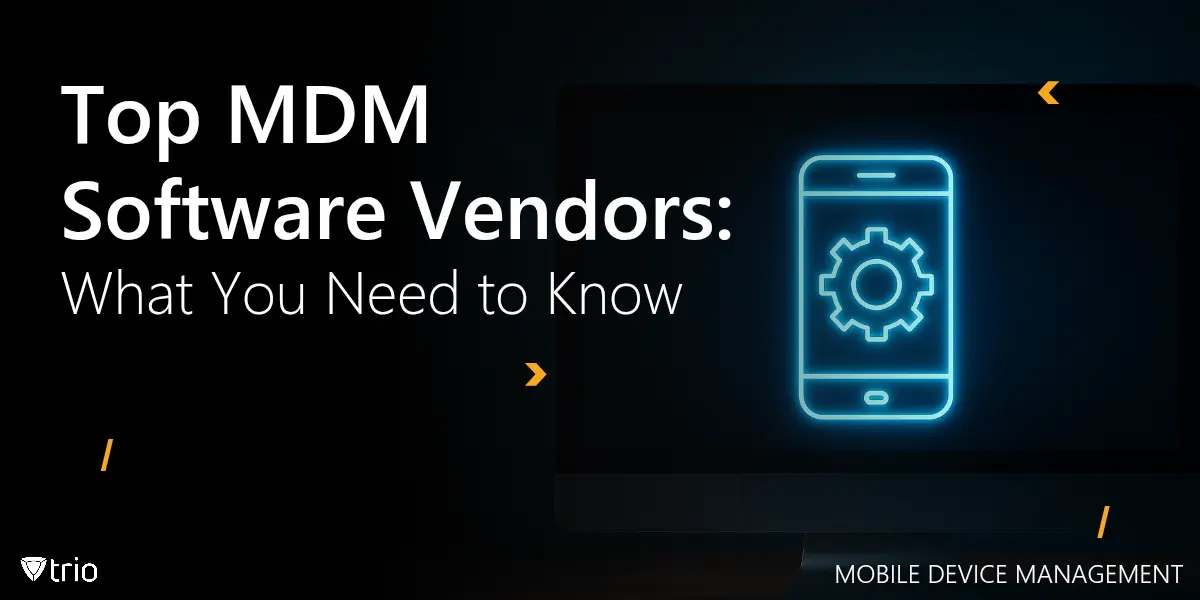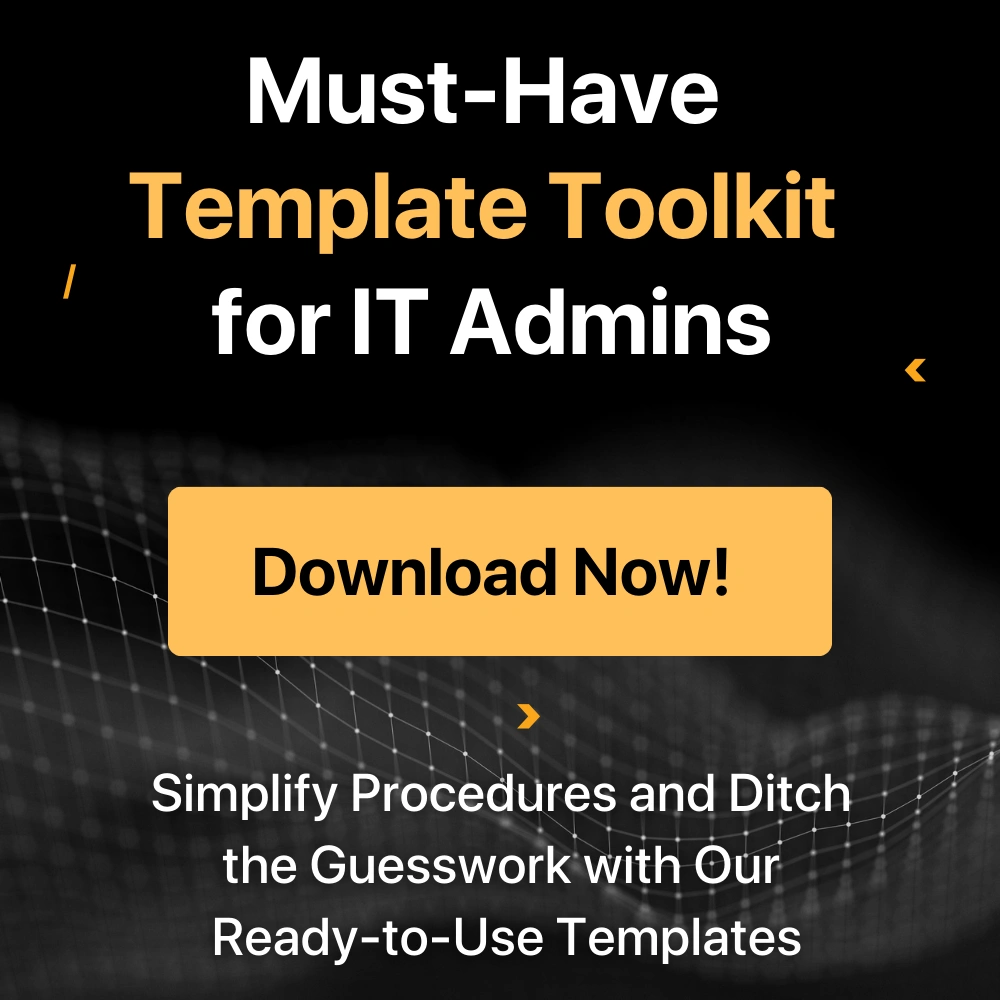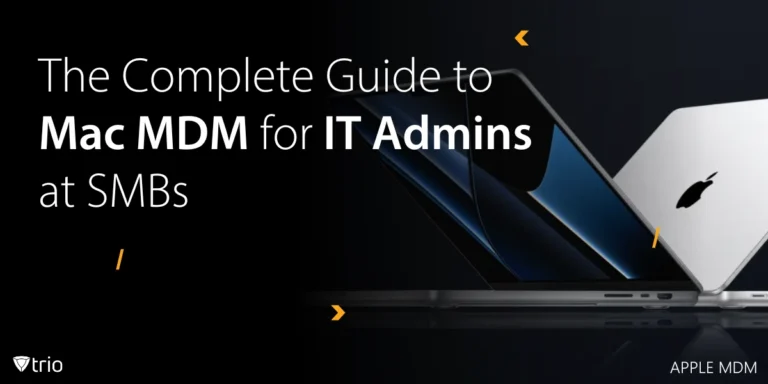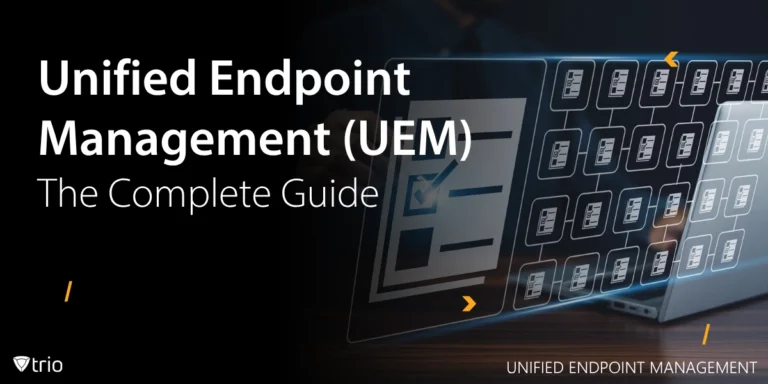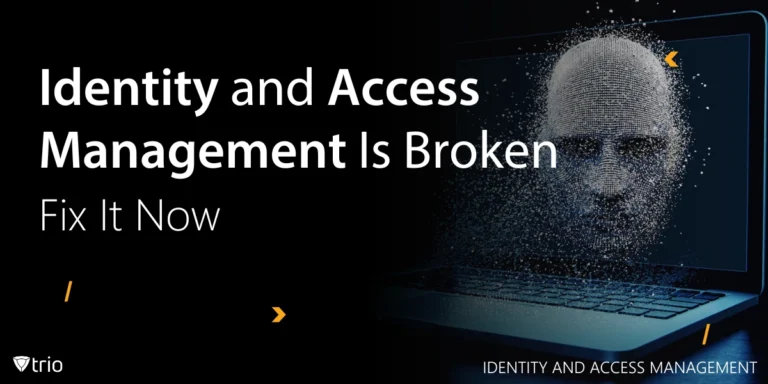According to IBM, the average data breach costs $4.88M globally, and small businesses aren’t immune. Smaller businesses can still face recovery costs ranging from $120K to over $1M, once you factor in legal fees, lost contracts, and regulatory fines. Often, the culprit is an unmanaged or unsecured mobile device.
For IT admins at small and mid-sized businesses (SMBs), choosing the right MDM software vendor is not just a security decision; it’s a survival strategy.
MDM (Mobile Device Management) platforms let you control, secure, and monitor mobile devices used across your workforce. But not all MDM software vendors are built the same.
What You’ll Learn in This Guide:
- What separates top MDM vendors from legacy tools
- Real-world data types your MDM must protect
- Hidden costs of picking the wrong solution
- How to match vendor strengths to your SMB needs
- Where Trio fits in as a lean, all-in-one MDM alternative
Why MDM Matters More Than Ever
Modern SMBs operate with distributed teams, BYOD policies, and limited IT resources. You need to:
- Enforce encryption and security policies across all devices
- Block unauthorized app usage or data movement
- Track compliance, even for remote or field devices
- Onboard and offboard users without delay
Legacy tools make this complex, costly, and slow. Today’s best MDM software vendors offer integrated platforms that bundle app management, compliance, and automation into one dashboard, with zero need for agents or extra hardware.
Remote work isn’t going away: according to Forbes, 1 in 5 employees now work remotely full-time, and that shift has brought new levels of risk for IT admins. With devices spread across homes, cafés, airports, and co-working spaces, unmanaged endpoints are now the weakest security link. In this landscape, remote work security has become a top priority for IT admins.
Key Features to Look for in an MDM Software Vendor
When evaluating MDM software vendors, it’s easy to get lost in feature checklists. But for IT teams, only a handful of capabilities truly move the needle, protecting data, streamlining workflows, and reducing time spent on manual device management.
Here’s what to prioritize:
Device Security at Its Core
A lost phone shouldn’t turn into a data breach.
Look for MDM platforms that offer:
- Full-disk encryption enforcement
- Remote wipe and lock for stolen or misplaced devices
- Automatic screen lock and password policies
These are the baseline protections that guard sensitive company data, no matter where your employees work.

Stress-Free App Management
Tired of chasing down updates? A modern MDM should:
- Push approved apps to any device remotely
- Enforce access controls based on user role
- Handle patch management for OS and apps across platforms
This means fewer help desk tickets and no more risky, outdated software running quietly in the background.
Compliance and Reporting Without the Headaches
Whether you're facing internal audits or external regulations (HIPAA, GDPR, PCI DSS), your MDM should make compliance automation easy by:
- Generating on-demand reports
- Alerting you to non-compliant devices in real time
- Offering pre-built policy templates to get started fast
Real-Time Monitoring and Actionable Analytics
You can’t fix what you can’t see. The right MDM vendor gives you:
- A live dashboard showing device status, usage, and security risks
- Alerts on suspicious behavior or policy violations
- Historical reports to spot trends and plan proactively
All from a single, unified console, no toggling between systems.
Bottom line: The right MDM software vendor solves real SMB challenges with speed, visibility, and automation.
Types of MDM Software Vendors: Which One Fits Your SMB?
Not all MDM vendors are created equal. The right choice depends on how your organization operates, the level of control you need, and how lean your IT team is. Here’s a breakdown to help you choose wisely:
| MDM Vendor Type | What It Offers | Best For |
|---|---|---|
| Cloud-Based | Fully hosted and managed in the cloud. Offers scalability, low setup cost, and remote management. | SMBs or growing businesses that want quick deployment and minimal overhead. |
| On-Premises | Installed on your own IT infrastructure. Gives full control over data, policy enforcement, and network rules. | Enterprises with strict compliance rules, offline environments, or highly customized IT stacks. |
| Hybrid | Combines cloud flexibility with on-prem control over certain workflows or sensitive data. | Mid-sized organizations with mixed needs or partial data residency requirements. |
How to Decide:
Ask yourself:
- Does your IT team have the bandwidth for on-prem maintenance?
- Do you need remote access and rapid onboarding?
- Are there compliance or data residency needs that limit cloud use?
For most SMBs, cloud-based MDM vendors offer the right mix of agility, affordability, and ease of use.
How to Evaluate and Compare MDM Vendors
So you’ve narrowed down the type of MDM vendor (cloud, on-prem, hybrid). Now comes the real test: finding the one that actually works for your environment, your resources, and your future.
Here’s how to break it down:
| Evaluation Area | What to Ask | Why It Matters |
|---|---|---|
| Scalability & Support | Can the solution grow with your team and device count? How responsive is support? | Many MDM vendors support 20 devices well, but falter at 200. You need room to grow. |
| Ease of Use & Integration | Is the dashboard intuitive? Does it work with your existing OS, identity providers, and workflows? | A complicated system eats up time and requires more training than most SMBs can afford. |
| Cost Structure | Do they charge per device, per user, or offer tiered bundles? Any hidden costs for features you need? | Transparent pricing is rare. The wrong model can destroy your budget as you scale. |
| Customer Feedback & Reviews | What do current users say? Any red flags about bugs, lagging updates, or poor customer service? | Real-world experience matters. Don’t rely solely on feature lists—look for lived insight. |
Look beyond checklists. The best MDM tool isn’t the one with the most features; it’s the one that fits your reality: lean teams, tight budgets, and fast-changing needs.

MDM Vendor Comparison
With dozens of options on the market, choosing the right MDM vendor can be overwhelming. This table breaks down leading MDM solutions in 2025, highlighting their deployment models, standout features, and suitability for SMBs.
| Vendor | Best For | Deployment | Key Features | Ideal For SMBs? |
|---|---|---|---|---|
| Trio | Unified device, app, and compliance management | Cloud | Remote lock/wipe, live monitoring, Apple Business Manager integration, workflow automation | ✅ Yes |
| Scalefusion | Multi-OS support with strong kiosk mode | Cloud | Android/iOS/macOS/Windows/Linux support, kiosk mode, remote troubleshooting | ✅ Yes |
| Jamf Pro | Apple device management | Cloud | Apple-specific features, zero-touch deployment, patch management | ⚠️ Limited |
| Hexnode UEM | Cross-platform endpoint management | Cloud | Device/app management, kiosk mode, remote view, patch management | ✅ Yes |
| ManageEngine MDM Plus | Comprehensive enterprise-level features | Cloud/On-prem | Device/app/content management, geofencing, remote troubleshooting | ⚠️ Complex |
| Miradore | Budget-friendly MDM with essential features | Cloud | Device management, security policies, remote lock/wipe | ✅ Yes |
| NinjaOne | Endpoint management with patch compliance | Cloud | Remote monitoring, patch management, automation | ✅ Yes |
| Rippling | Integrated HR and IT management | Cloud | Device management, app provisioning, employee onboarding | ✅ Yes |
| AppTec360 | Security-focused MDM with Swiss compliance | Cloud/On-prem | Device/app management, secure browser, kiosk mode | ⚠️ Complex |
| Jamf School | Education-focused Apple device management | Cloud | Classroom management, content filtering, student device monitoring | ✅ Yes |
Key Takeaways
- Trio: Offers a comprehensive, cloud-based MDM solution with features like remote lock/wipe, live monitoring, and integration with Apple Business Manager, making it ideal for SMBs seeking unified device and compliance management.
- Scalefusion: Provides multi-OS support and strong kiosk mode capabilities, suitable for businesses needing versatile device management across various platforms.
- Jamf Pro: Specializes in Apple device management with features like zero-touch deployment and patch management; however, its focus on Apple devices may limit its applicability for SMBs with diverse device ecosystems.
- Hexnode UEM: Delivers cross-platform endpoint management with features like kiosk mode and patch management, offering a balanced solution for SMBs.
- ManageEngine MDM Plus: Provides comprehensive enterprise-level features, but its complexity may be overwhelming for SMBs with limited IT resources.
- Miradore: A budget-friendly, cloud-based MDM offering essential features, making it a good starting point for SMBs new to device management.
- NinjaOne: Focuses on endpoint management with strong patch compliance, suitable for SMBs prioritizing security and automation.
- Rippling: Integrates HR and IT management, streamlining device provisioning and employee onboarding for SMBs seeking an all-in-one solution.
- AppTec360: Emphasizes security with Swiss compliance standards, offering both cloud and on-premises deployment, though its complexity may pose challenges for SMBs.
- Jamf School: Tailored for educational institutions managing Apple devices, providing classroom management and student monitoring features.
Top MDM Software: Trio
Trio stands out among MDM software vendors for its cloud-native simplicity and powerful automation, making it a go-to choice for SMBs managing mobile, desktop, and BYOD fleets at scale.
From a single dashboard, IT teams can:
- Enforce security policies in real time
- Remotely lock, wipe, or troubleshoot devices
- Monitor compliance and usage across platforms
- Automate onboarding, updates, and offboarding tasks
With live monitoring and workflow automation baked in, Trio helps lean IT teams reduce manual effort and improve oversight, without needing a large support staff.
To get hands-on, businesses can start with a free demo and a 14-day free trial, allowing them to explore Trio’s full feature set before making a decision.
Conclusion
Choosing the right MDM software vendor is a critical move for protecting your data, streamlining device oversight, and scaling securely in today’s remote-first world. Whether you’re managing iPhones, laptops, or a mixed device fleet, the key is to match vendor capabilities with your organization’s size, infrastructure, and security priorities.
Take time to evaluate your needs, compare top solutions, and test platforms like Trio. The right choice will give you real control, visibility, and peace of mind.
Frequently Asked Questions (FAQ) on MDM Vendors
Below are some frequently asked questions about Mobile Device Management (MDM) vendors to help you better understand their features, benefits, and how to choose the right solution for your organization.
What should I look for when evaluating MDM vendors?
When comparing MDM vendors, prioritize solutions that offer strong security features, cross-platform support (especially for Windows, macOS, iOS, and Android), ease of use, and integrations with identity providers. Consider scalability, reporting capabilities, and customer reviews to find the right fit for your organization.
Who are the best mobile device management providers in 2025?
Some of the best mobile device management providers today include Trio, Hexnode, Jamf, Scalefusion, and ManageEngine MDM Plus. These top-rated MDM solutions vary in features, pricing, and target users, so it's important to match them to your specific IT needs.
Is there a definitive MDM software vendors list I can follow?
While there’s no single list that fits every business, a solid MDM software vendors list for SMBs includes:
- Trio
- Scalefusion
- Hexnode
- Miradore
- NinjaOne
- Jamf Pro
- ManageEngine MDM
These cover a range of use cases from budget-friendly setups to enterprise-level features.
What’s the best MDM for Windows devices?
If you’re prioritizing Windows device coverage, the best MDM for Windows includes Trio, Hexnode, and Microsoft Intune. These offer deep Windows management features such as patching, compliance enforcement, and software distribution.
Which MDM software vendors offer the best value for small businesses?
The cheapest MDM software options with essential features include Miradore, Hexnode (basic plan), and Scalefusion. Trio is also a strong value option, offering enterprise-level capabilities at SMB-friendly pricing with a per-user model that supports multiple devices.
Are there device management vendors that support BYOD policies?
Yes, many modern device management vendors, including Trio, Hexnode, and Scalefusion, support BYOD (Bring Your Own Device) by enforcing separation between personal and corporate data, applying encryption, and allowing remote wipe of business data only.
What differentiates top-rated MDM solutions from the rest?
Top-rated MDM solutions typically offer:
- Real-time monitoring and compliance alerts
- Automated onboarding/offboarding
- Integration with identity providers like Azure AD and Okta
- Scalable pricing models for growing businesses
- Strong cross-platform support
Get Ahead of the Curve
Every organization today needs a solution to automate time-consuming tasks and strengthen security.
Without the right tools, manual processes drain resources and leave gaps in protection. Trio MDM is designed to solve this problem, automating key tasks, boosting security, and ensuring compliance with ease.
Don't let inefficiencies hold you back. Learn how Trio MDM can revolutionize your IT operations or request a free trial today!
